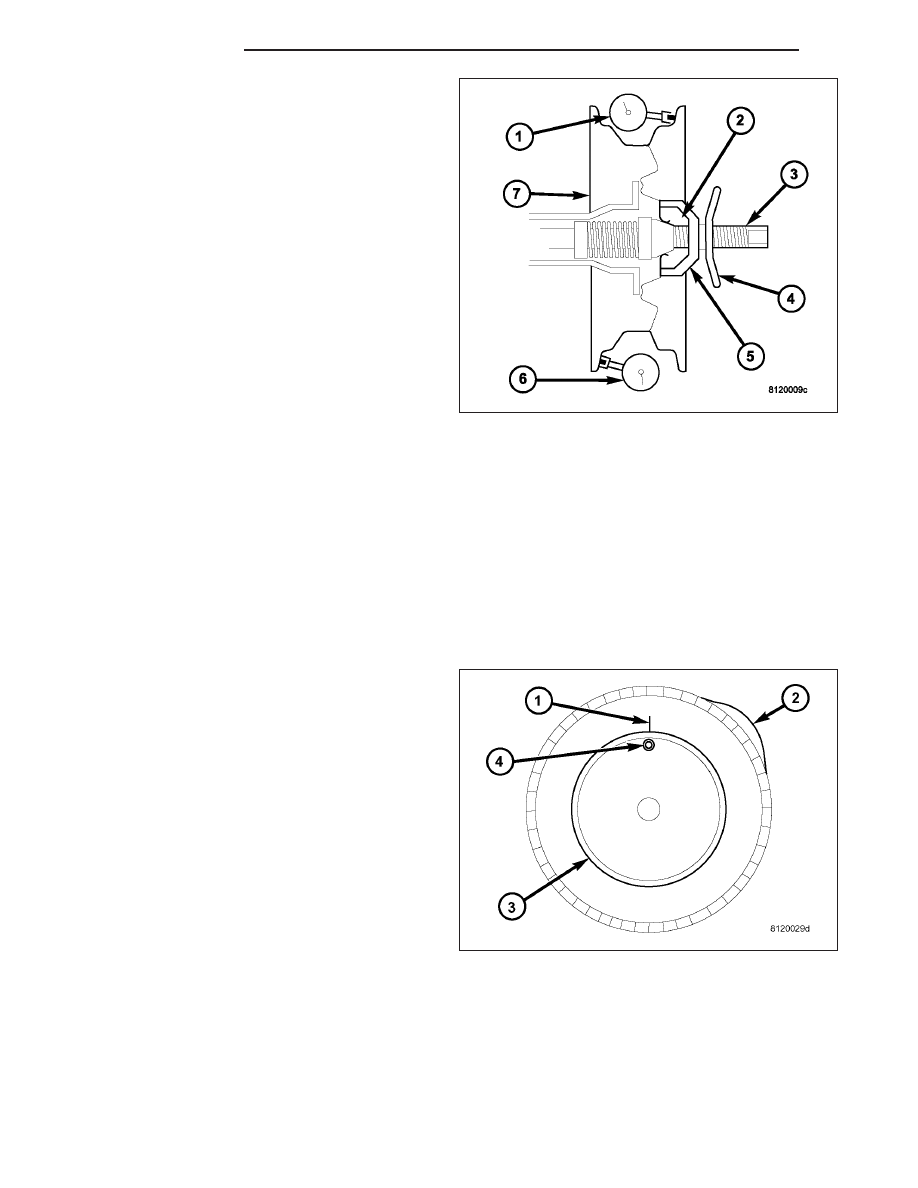Content .. 1562 1563 1564 1565 ..
Jeep Grand Cherokee WK. Manual - part 1564

3. Check the wheel lateral runout.
•
STEEL WHEELS: Radial runout 0.031 in., Lateral
runout 0.031 in. (maximum)
•
ALUMINUM WHEELS: Radial runout 0.02 in.,
Lateral runout 0.025 in. (maximum)
4. If point of greatest wheel lateral runout is near orig-
inal
chalk
mark,
remount
tire
180
degrees.
Recheck runout.
STANDARD PROCEDURE
MATCH MOUNTING
Wheels and tires that are mounted means that the high spot of the tire is matched to the low spot on the wheel rim.
Each are marked with a bright colored temporary label on the outboard surface for alignment. The wheel is also
marked permanently on the inside of the rim in the tire well. This permanent mark may be a paint dot or line, a
permanent label or a stamped impression such as an X. An optional location mark is a small spherical indentation
on the vertical face of the outboard flange on some non styled base steel wheels. The tire must be removed to
locate the permanent mark on the inside of the wheel.
Before dismounting a tire from its wheel, a reference mark should be placed on the tire at the valve stem location.
This reference will ensure that it is remounted in the original position on the wheel.
1. Remove the tire and wheel assembly from the
vehicle and mount on a service dynamic balance
machine.
2. Measure the total runout on the center of the tire
tread rib (3) with a dial indicator. Record the indi-
cator reading. Mark the tire to indicate the high
spot (2). Place a mark on the tire at the valve stem
(4) location (1).
22 - 4
TIRES/WHEELS
WK